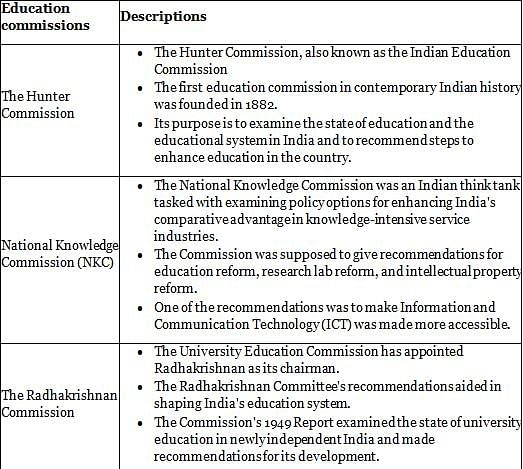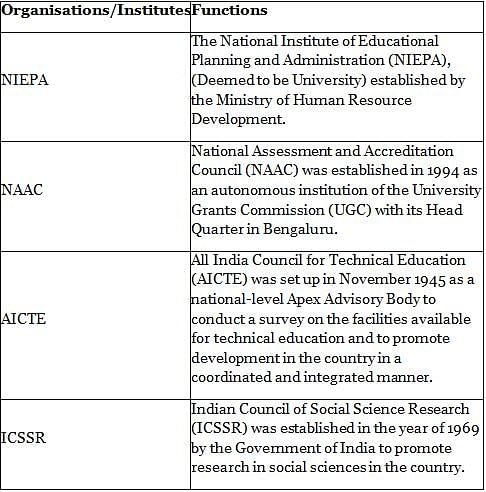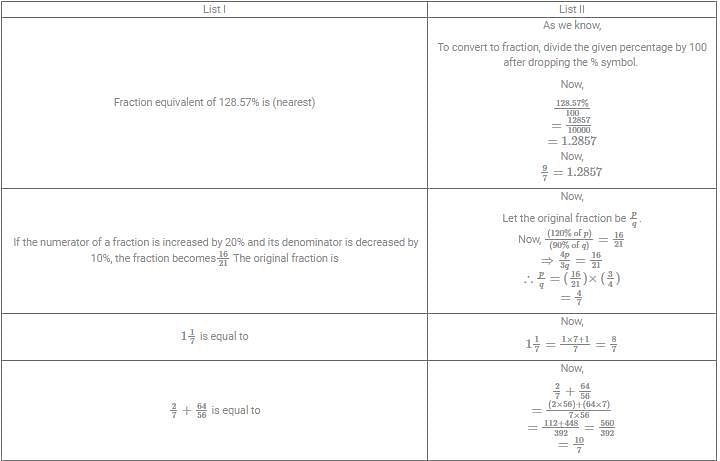TS SET Paper 1 Mock Test - 4 - TS TET MCQ
30 Questions MCQ Test - TS SET Paper 1 Mock Test - 4
Which one of the following is a good psychological factor for effective learning to take place?
Direction: Read the passage carefully and answer the following question.
If the world is different today, we need to think, talk and engage accordingly. Falling back is unlikely to help, he said adding “purposeful pursuit of national interest is shifting global dynamics”. Highlighting India’s new approach in dealing with terrorism he compared “lack of response to the terror attack in Mumbai in comparison to the way the country responded to the Uri and Pulwama strikes. On India walking away from the Regional Comprehensive Economic Partnership, the external affair minister said no agreement was better than having a bad agreement.
Giving a historical perspective to geopolitical issues, Jai-Shankar said “For years India’s position on the world state seemed assured but the 1962 conflict with China significantly damaged India’s standing.
Q.“For years India’s position on the world state seemed assured but the 1962 conflict with China significantly damaged India’s standing."
The above statement was given by:
If the world is different today, we need to think, talk and engage accordingly. Falling back is unlikely to help, he said adding “purposeful pursuit of national interest is shifting global dynamics”. Highlighting India’s new approach in dealing with terrorism he compared “lack of response to the terror attack in Mumbai in comparison to the way the country responded to the Uri and Pulwama strikes. On India walking away from the Regional Comprehensive Economic Partnership, the external affair minister said no agreement was better than having a bad agreement.
Giving a historical perspective to geopolitical issues, Jai-Shankar said “For years India’s position on the world state seemed assured but the 1962 conflict with China significantly damaged India’s standing.
The above statement was given by:
Which of the following set of statements reflects the basic characteristics of teaching?
(A) Teaching is related to learning.
(B) Teaching is a ‘task’ word while learning is an ‘achievement’ word.
(C) One may teach without learning taking place.
(A) Teaching is related to learning.
(B) Teaching is a ‘task’ word while learning is an ‘achievement’ word.
(C) One may teach without learning taking place.
If the salary of a person was first increased by 10% and later, the same was reduced by 10%, then the net change in his salary is
Direction: Read the information carefully and answer the following question.
For a country, CO2 emission (million metric tons) from various sectors are given in the following table.

Q. By what percentage (\%\), the total emissions of CO2 have increased from 2005 to 2009?
Which of the following is not the function of Mass media?
Direction: Read the following excerpt and answer the questions asked at the end. The answers to the questions should be based on the excerpt.
Although water covers approximately sixty seven percent of the Earth's surface, of this less than three percent is fresh water. Accounting for fresh water locked in glaciers, ice-caps or otherwise inaccessible, less than a tenth of a percent of the Earth's water is available for human consumption. Pollution, population growth and wasteful irrigation practices are contributing to a worldwide water shortage. When the clear precious liquid becomes scarce, countries begin to assert claims on fresh water supplies. As a result, drinkable water has become a region of conflict that could eventually lead to greater hostilities between nations.
Some countries such as the United States, have ample sources of water. In other nations, such as China, water is less plentiful. As water resources dwindle, competition for available sources will rise. Nations may claim rights to a particular body Of fresh water or they may plan to build dams and other projects on rivers. If two or more nations which disagree on water rights or building projects, conflicts can emerge. In order to combat this issue many countries are adopting water conservation and security solutions. The United Nations has implemented programs to combat potential issues that could lead to violence.
Q. Which of the following could be the probable reason for hostility among nations in the future?
Match List I with List II

Choose the correct answer from the option given below:
System software is the set of programs that enables the computer’s hardware devices and _________ software to work together.
Which Telephonic Conferencing with a radio link is very popular throughout the world?
The statement - "We need to understand the importance of controlling our mind to tread the path that leads to Buddhahood" - is
Direction: Read the passage given below and answer the questions by choosing the correct/most appropriate options.
More than eight months after the national lockdown was announced in late March, urban India is learning to live with the Covid-I9 pandemic. In fact, indicating a positive outlook for the future, many survey respondents in a recent survey say they plan to return to pre-lockdown levels of shopping, personal grooming, going to cinemas and socializing as pandemic fears continue to recede.
The survey findings highlight that the suppression of consumer demand because of fears of job losses and salary cuts could be coming to an end. Increasingly, urban Indians are showing increased confidence about the future of the economy. This could be an indicator of the possible 'pent-up demand' that several economists have been talking about — a demand that could be unleashed once a vaccine is developed and distributed, or when there are signs of the pandemic's spread reducing to negligible levels or vanishing totally.
Around 65 per cent of respondents said they had settled into new routines, or that they saw signs of the situation improving, or they had come to terms with the pandemic and were moving on with their lives. And since the survey was conducted before the news of the successful trials of the Pfizer vaccine for the coronavirus was announced, it is likely that the consumers are now even more positive in their outlook about the future.
Q. Which statement in the passage/phrase indicates that 'Life must go on'?
The target set by the Indian government for generating power from wind energy by the year 2022 was
How can the objectivity of the research be enhanced?
Direction: Read the following passage carefully and answer the question.
If India has to develop her internal strengths, the nation has to focus on the technological imperatives, keeping in mind three dynamic dimensions: the people, the overall economy and the strategic interests. These technological imperatives also take into account a ‘fourth’ dimension, time, an offshoot of modern-day dynamism in business, trade, and technology that leads to continually shifting targets. We believe that technological strengths are especially crucial in dealing with this fourth dimension underlying continuous change in the aspirations of the people, the economy in the global context, and the strategic interests. The progress of technology lies at the heart of human history. Technological strengths are the key to creating more productive employment in an increasingly competitive market place and to continually upgrade human skills. Without a pervasive use of technologies, we cannot achieve the overall development of our people in the years to come. The direct linkages of technology to the nation’s strategic strengths are becoming more and more clear, especially since the 1990s. India’s own strength in a number of core areas still puts it in a position of reasonable strength in the geopolitical context. Any nation aspiring to become a developed one needs to have strengths in various strategic technologies and also the ability to continually upgrade them through its own creative strengths. For people-oriented actions as well, whether for the creation of large scale productive employment or for ensuring nutritional and health security for people or for better living conditions, technology is the only vital input. The absence of greater technological impetus could lead to lower productivity and wastage of precious natural resources. Activities with low productivity or low-value addition, in the final analysis, hurt the poorest most. The technological imperatives to lift our people to a new life, and to life, they are entitled to be important. India, aspiring to become a major economic power in terms of trade and increase in GDP, cannot succeed on the strength of turnkey projects designed and built abroad or only through large-scale imports of plant machinery, equipment and know-how. Even while being alive to the short-term realities, medium and long-term strategies to develop core technological strengths within our industry are vital for envisioning a developed India.
Q. More productive employment demands :
The science of communication and control is known as
Which one of the following schools has not accepted anumana (inference) as a valid source of knowledge?
Direction: Read the given passage and answer the questions that follow.
Early feminist theory had emphasised the commonalities of women's oppression, neglecting profound differences between women in terms of class, age, religion, race and nation. As its exclusionary nature became evident, the collective 'we' of feminism was called into question. The inadequacies of feminist theorising that conflated the condition of white, middle class women with the condition of all women were highlighted in North America by black and Latin feminists, and in Britain by black and Asian feminists. Such critiques evoked the concepts of 'inter‐locking identities' and inter‐locking oppressions'. Related and more radical analyses came from feminist scholars in the Third world, where quite different agendas were called for. These critiques heightened the irrelevance of western feminism's analytical frameworks to the lives of most women around the world and attempted to reposition feminist debate within broader social, economic and cultural contexts of analysis advocated by scholars such as Janus. Such critiques spoke from a post‐colonial position, in which the self‐assumed authority of western feminists to speak about or indeed for others was disputed and decentered. Influential accounts of the tendencies of masculinist imperialist ideological formation to construct a 'monolithic Third world' woman', discursively constituted as the universal victim of Third world patriarchy, challenged feminists to "unlearn" their privilege and to deconstruct their own authority as intellectuals. These positions appeared to question the legitimacy of outside intervention of any kind, whether intellectual or political. Although subsequently attempted by the Third world scholars anxious to move beyond standpoints that threatened to mark all feminist politics as either inauthentic or unnecessary, they were enduringly influential in highlighting the questions identity and authority in feminist studies.
Q. The passage speaks of:
Directions: Read the following passage carefully and answer the question.
I had occasion to work with her closely during the Women's International Year in 1975 when she was chairing a Steering Committee and made me the member in charge of publicity. Representatives from different political parties and women's organisations were on the committee, and though the leftists claimed a sort of proprietary right over her, Aruna encouraged and treated all members alike. It was not her political affiliations or her involvement in a particular cause, which won her respect and recognition, but her utter honesty in public life, her integrity and her compassion for the oppressed which made her an adorable person. She had the courage to differ with and defy the mightiest in the land; yet her human spirit prompted her to work in the worst of slums to offer succour to the poor and the exploited.
In later years – around late eighties and early nineties – Aruna Asaf Ali's health began to deteriorate. Though her mind remained alert, she could not actively take up her pet causes – action for women's advancement, planning for economic justice, role of media, reaffirmation of values in public affairs etc. Slowly, her movements were restricted and Aruna, who had drawn sustenance from common people, from her involvement in public life, became a lonely person. She passed away in July 1996.
Q. Who tried to monopolise Aruna as their proprietary right?
Direction: The following table presents the details about the number of players participating in three (3) different games (Football, Cricket and Badminton) from six (6) different countries (India, UK, Australia, Canada, Spain and USA) during the year
2020. Based on the date in the table, answer the question:
Country-wise Participation of players in Games
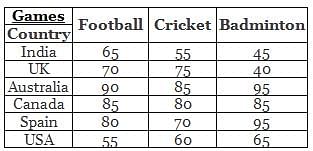
Q. If country A represents the highest number of players participating in Football and country B represents the lowest number of players participating in Badminton, then (A, B) = _______.
A lecture without feedback from the students is ______.
Direction: Read the following passage carefully and answer the questions.
The Draft National Education Policy, 2019 (DNEP) implements the India-centric education system, which contributes to the continuous transformation of our nation into a just and vibrant knowledge society, by providing high-quality education to all. The NITI Aayog has focused policy focus specifically on education and outcomes of education from programs. It has promoted competitive federalism among states to improve their educational indicators that are measurable by a battery of tests on students. But any serious work on 'No One Left Behind' (NOLB) can ask for a new and reformist approach. DNEP has provided some hope, but it calls for further examination of rhetoric and reality.
DNEP must be read in the context of the current economic and educational climate in order to estimate the path and speed needed to make its vision a reality. On the one hand, we are in another new era of industrial revolution or skilled age. On the other hand, at present, around one million youth enter the workforce in India each month, but most of them are just raw hands without professional technical knowledge or practical business skills. The weak relationship between education and employment poses a potential risk of turning India's demographic dividend into a demographic disaster.
In the education sector, the elusive chaos of the quantity-quality-equity triangle remains unresolved. Although the merits of education are well recognized as an invaluable public, public investment for this has been minimal. It is relevant to explore how DNEP has addressed some key areas for policy interventions in school education, namely access, which can be measured by the education system, the size and flow of students crossing over to equity, which can be seen development-deprived populations, and lack or persistence of quality, which can be understood by teaching-learning processes and developmental outcomes for children that are more easily implied by attainable scores.
Q. What calls for further examination of rhetoric and reality?
Directions: Study the given table and answer the following question.
The following table shows the number of students of 7 colleges participating in extra curricular activities:
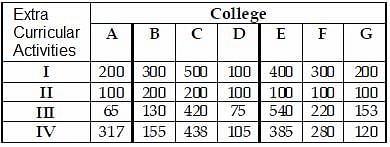
Q. The college in which minimum number of students participate in extra curricular activities is
If the statement 'most of the students are obedient' is taken to be true, which of the following pairs of statements can be claimed to be true?
I. All obedient persons are students.
II. All students are obedient.
III. Some students are obedient.
IV. Some students are not disobedient.
Match List I with List II

Choose the correct answer from the options given below:
Identify the advantages of LED Monitor:
- It includes a broader dimming range.
- It is a more reliable monitor.
- It is often less expensive.
- It consumes less power (20 watts), and run on a lower temperature.
- It has a more dynamic contrast ratio.
Choose the correct answer from the options given below:
Organisational communication can also be equated with
Match List I with List II in order to make correct sentences.

Choose the correct answer from the options given below:







